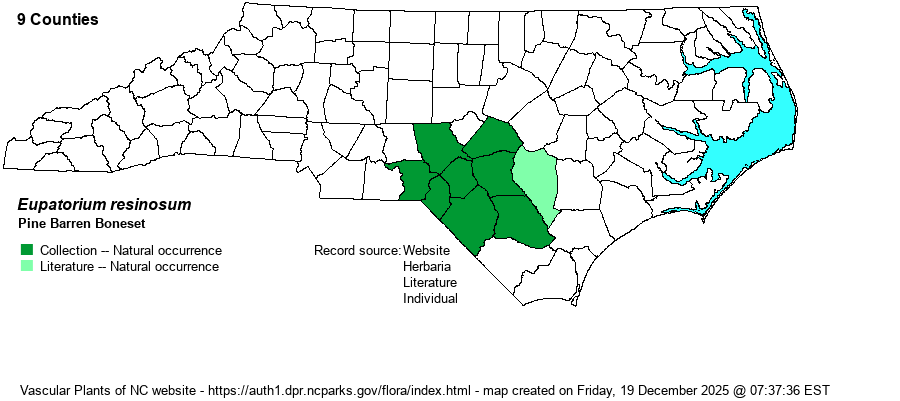| Author | Torrey ex de Candolle | |
| Distribution | Sandhills and southwestern Coastal Plain, east to Sampson County.
Coastal Plain, southeastern NY (formerly), NJ, DE (formerly), NC, and SC. A quite disjunct range, not known from MD or VA. | |
| Abundance | Uncommon to locally common; can grow in dense stands. Populations outside of the Sandhills have diminished in number over the decades, due largely to fire suppression and habitat loss. This species is still listed as Significantly Rare by the NCNHP, though many new populations have been found in the last 20 years (on and near Fort Bragg), and perhaps Watch List is a better status. | |
| Habitat | Wet blackwater streamheads and marshy creek margins, beaver ponds and marshes (may grow on old stumps and tussocks), pitcher-plant seepage bogs, wet roadside ditches, wet places in powerline clearings. |
| Phenology | Flowering and fruiting August-October. Tolerates fire well. | |
| Identification | Plants usually grow 2.5-3.5 feet tall, with relatively few, paired, sessile leaves. The leaves are distinctive: about 10 cm (4 inches) long and 1 cm wide, with a long-tapering tip. The flowering heads each have 9-14 flowers, more than all of our other eupatoriums except E. perfoliatum. At first glance it looks like that species, but that species has perfoliate leaves, not leaves sessile at the base. Both grow in similar wet, sunny places, though E. perfoliatum seems to be quite rare where E. resinosum occurs in NC --for some odd reason! | |
| Taxonomic Comments | None
| |
| Other Common Name(s) | Resinous Boneset, Pine Barren Thoroughwort | |
| State Rank | S3 | |
| Global Rank | G3 | |
| State Status | SR-O | |
| US Status | | |
| USACE-agcp | OBL link |
| USACE-emp | OBL link |

